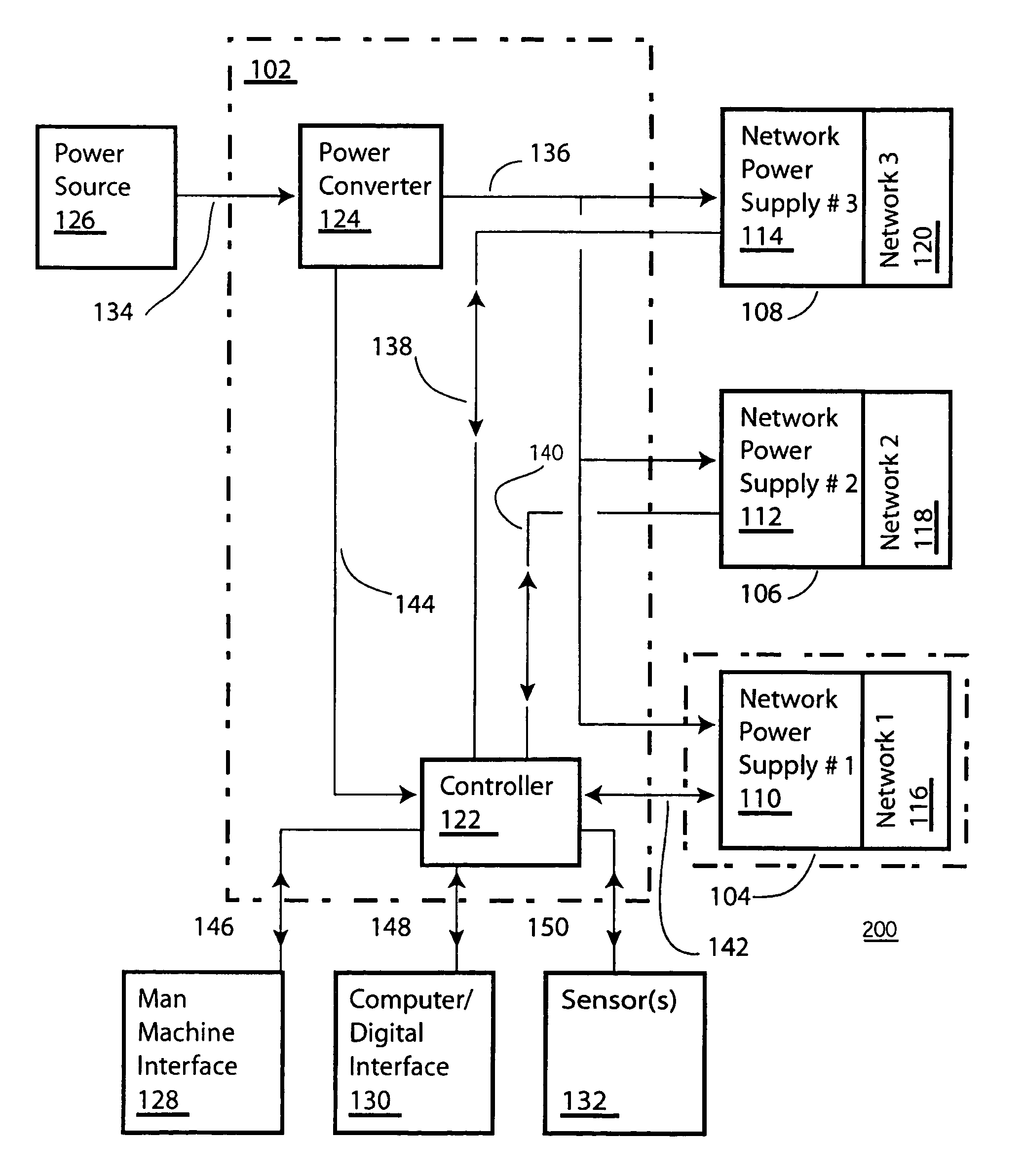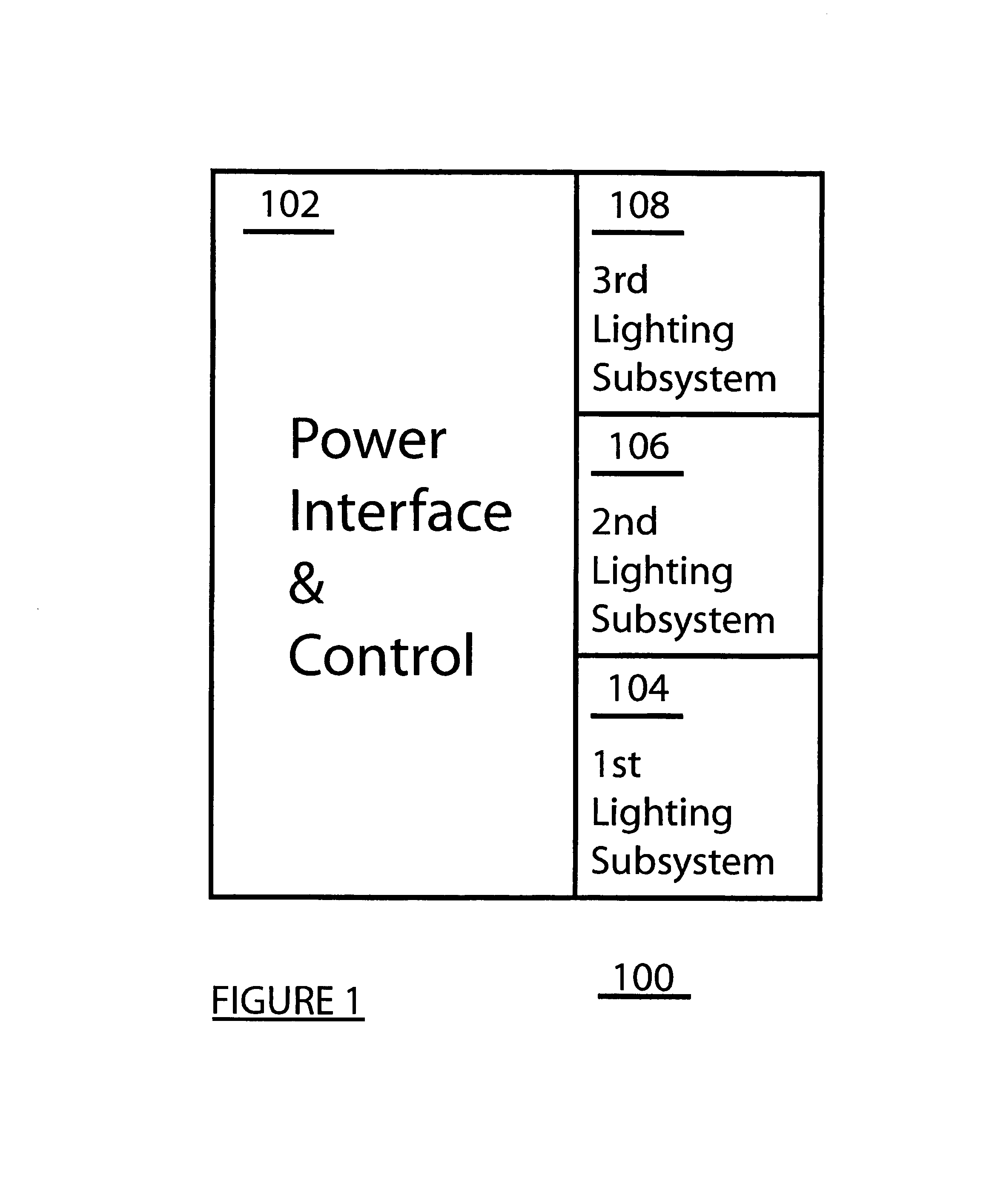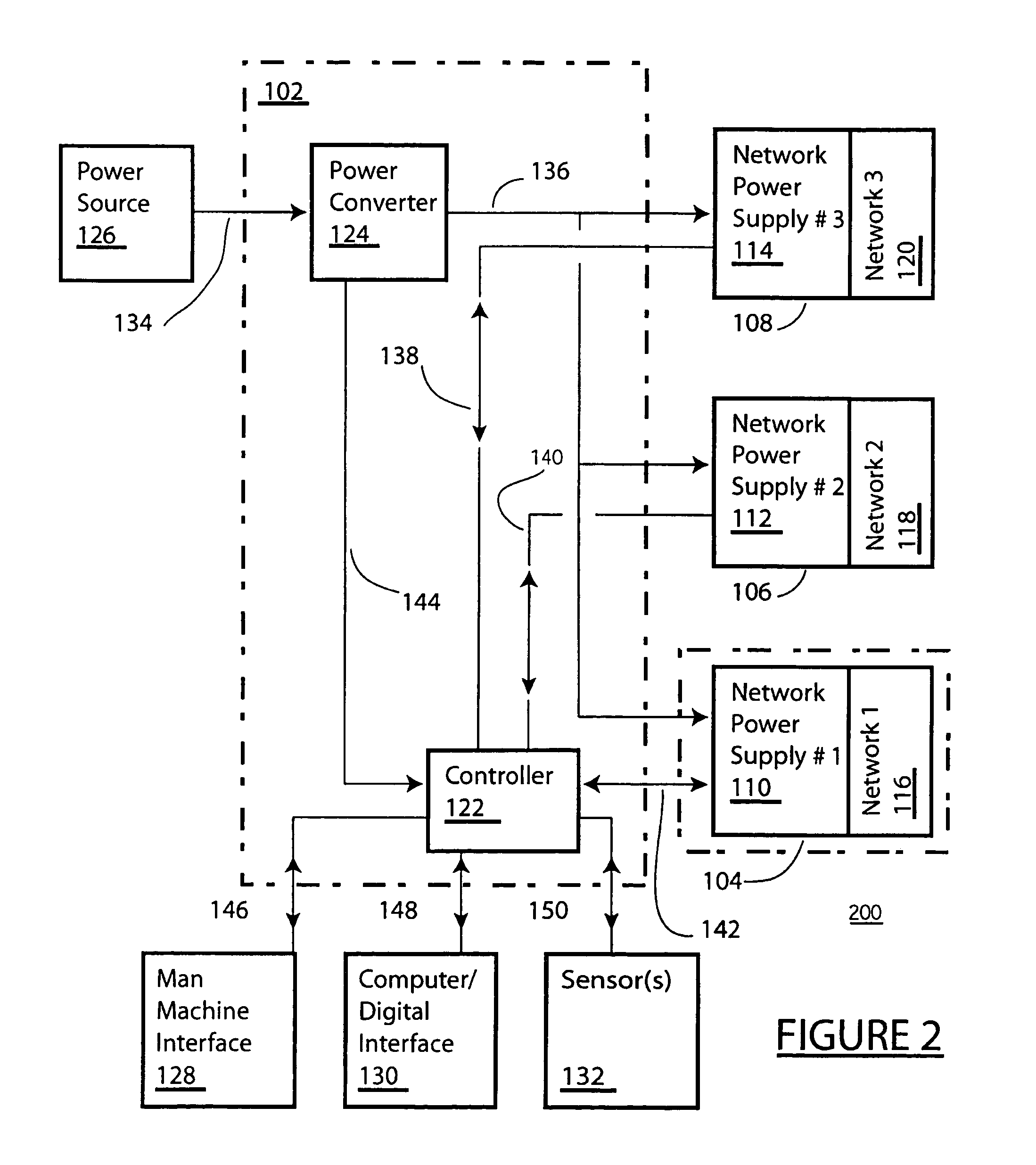Advanced low voltage lighting system
a lighting system and low-voltage technology, applied in the field of electric arts, can solve the problems of high circuit current, waste of present system, slow technological evolution, etc., and achieve the effect of increasing the pleasure of viewers and improving the utilization of conductor capacity
- Summary
- Abstract
- Description
- Claims
- Application Information
AI Technical Summary
Benefits of technology
Problems solved by technology
Method used
Image
Examples
embodiment 200
[0040]FIG. 2 shows an embodiment 200 of the lighting system 100. Here, the power, interface, and the control block 102 includes a power converter 124, a controller 122, and a plurality of circuits for making interconnections. A first power circuit 134 supplies power from a power source 126 to the power converter. A second power circuit 144 supplies power from the power converter to the controller. A third power circuit 136 interconnects respective first, second, and third network power supplies 110, 112, 114 with the power converter. First, second, and third bidirectional signal circuits 142, 140, 138 interconnect respective first, second, and third network power supplies 110, 112, 114 with the controller. Fourth, fifth, and sixth bidirectional signal circuits 146, 148, 150 interconnect respectively a man machine interface 128, a computer / digital interface 130, and sensor(s) 132 with the controller.
[0041]In some embodiments, the controller includes multiple controllers or control el...
embodiment 300
[0044]FIG. 3 shows an embodiment 300 of the first lighting subsystem 104. The first lighting subsystem 104 includes the first load network 120 and the first network power supply 110. Included in the first load network is a first trunk circuit 306 and a first load 302. First trunk circuit 306 couples a power output 304 of the first network power supply 110 and a power input 308 of the load 302. In an embodiment, the load 302 includes a plurality of discrete loads powered from the power input of the load network. In some embodiments a plurality of trunk circuits may be included, each trunk circuit supplying a respective power input of a respective load.
[0045]FIG. 4 shows another embodiment 400 of the first lighting subsystem 104. The first lighting subsystem 104 includes the first load network 116 and the first network power supply 110. Included in the first load network is a first trunk circuit 306 and a first load distribution network 409. The first trunk circuit coules the power ou...
embodiment 800
[0057]FIG. 8 shows an embodiment 800 of the controller 122. Here, the controller includes a bus 853 interconnecting memory, timers 862 and input / output interfaces. Memory includes program memory 868, volatile RAM memory 866, and non-volatile memory 864. Input / output interfaces include a local operator interface 854, interface to external input / output 856, analog to digital converter for sensor input / output 858, and power switch drivers 860 for driving external devices. As a person of ordinary skill in the art will understand, one or more of each of these devices may be incorporated into a single controller and / or replicated where elements of the controller are replicated to realize and / or support a plurality of functions or external input / output. One or more of these devices may be implemented in a single component or in multiple interconnected components. An example of a suitable hardware controller is the PIC18F8720 microcontroller available from Microchip Technology Incorporated ...
PUM
 Login to View More
Login to View More Abstract
Description
Claims
Application Information
 Login to View More
Login to View More - R&D
- Intellectual Property
- Life Sciences
- Materials
- Tech Scout
- Unparalleled Data Quality
- Higher Quality Content
- 60% Fewer Hallucinations
Browse by: Latest US Patents, China's latest patents, Technical Efficacy Thesaurus, Application Domain, Technology Topic, Popular Technical Reports.
© 2025 PatSnap. All rights reserved.Legal|Privacy policy|Modern Slavery Act Transparency Statement|Sitemap|About US| Contact US: help@patsnap.com



